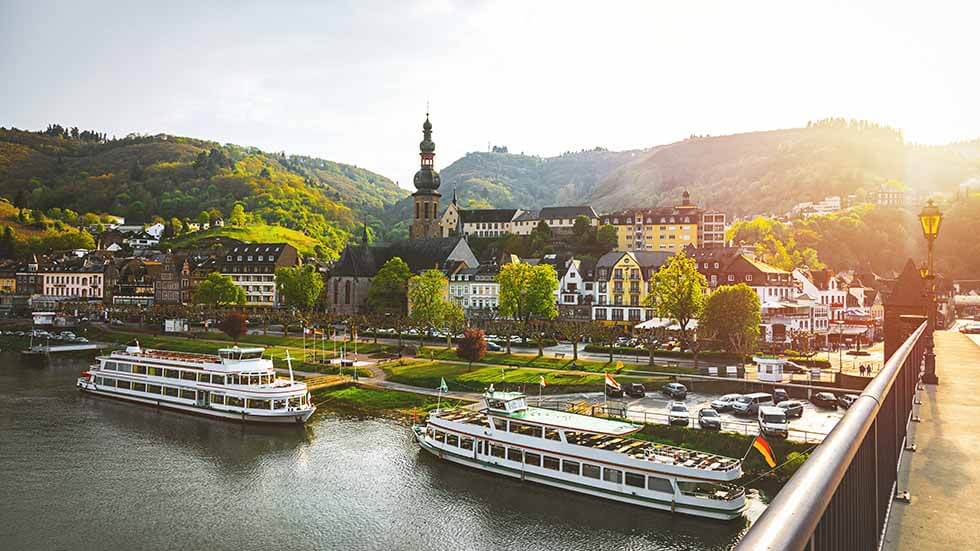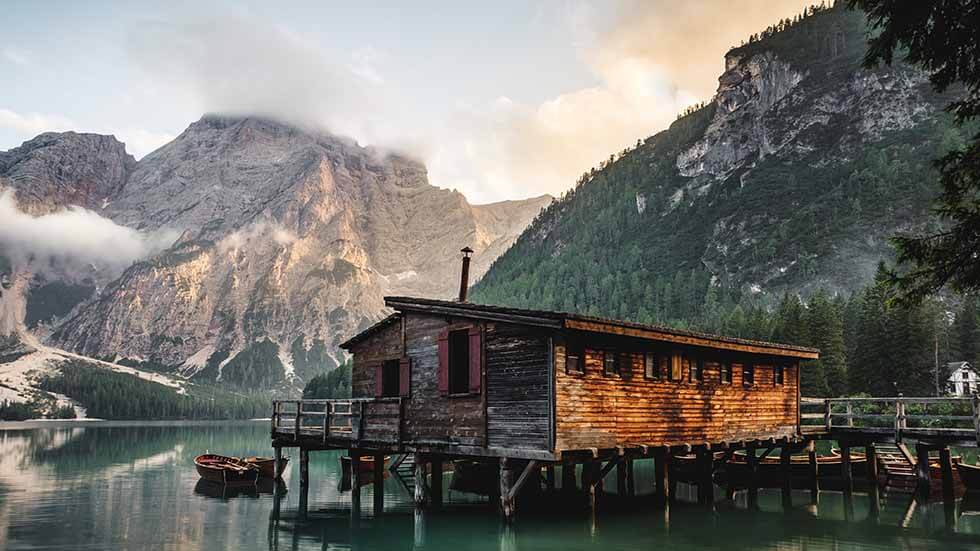Greening Your Travels
Sustainable tourism strategies to help you travel more responsibly


April 22 marks the anniversary of Earth Day. That—and recent warnings about the urgency of the environmental situation —has me thinking about all the ways our global gallivanting contributes to the planet’s woes. Biggest of all are the greenhouse gas emissions attributed to travel and tourism, which account for approximately 8 percent of global emissions annually, according to a 2018 research study. Then there’s increased waste as well as damage to natural places (until recently, I hadn’t known that the sunscreen I use to protect myself was harming coral reefs). And too many people crowding the same popular destinations doesn’t just overwhelm the infrastructure but also makes life more difficult for locals.
Yet we can’t stop traveling altogether. Millions of people across the world would lose their livelihoods; travel and tourism directly and indirectly accounted for 1 in 10 jobs and contributed more than $8.8 trillion to the world economy in 2018, according to the World Travel & Tourism Council. In some places, tourism is the number-one employer. And imagine never again seeing far-flung family and friends, experiencing different cultures or seeing the world beyond our own backyards.
“Overall, there are more positive effects from tourism than negative ones in most destinations,” notes Tanner Knorr, program manager with sustainable tourism consulting firm EplerWood International.
The solution, then, is to travel more responsibly. Here are eight suggestions to get you started.

1. Select your destination thoughtfully
Transportation is a major contributor to greenhouse gases, so if you choose vacation destinations closer to home, you’ll have a lower impact. There are probably quite a few places within a short drive or train ride that appeal to you.
If you’re set on going farther afield, stay longer. In many cases, going on one extended trip is more environmentally friendly than taking a lot of overnight or weekend getaways.
We’ve all heard about destinations that are experiencing tourism fatigue; too many tourists descending at once can overwhelm a city, island or national park. If you want to visit these popular locales, travel in the off-season, explore areas in or near the destination that are less crowded, and seek out sights and experiences off the beaten path. Also consider visiting destinations that may not be top-of-mind; after all, part of the pleasure of travel is that feeling of discovery.
A growing number of destinations are working to encourage sustainable and responsible tourism. Among those leading the way is the Central European country of Slovenia. A whopping 31 of its cities and regions are among the 2019 Sustainable Destinations Top 100 (sustainabletop100.org), a list compiled by sustainability experts at Green Destinations. The Netherlands and Portugal also have numerous entries in the Top 100.
Green Destinations and other independent organizations such as EarthCheck and Vireo Srl certify sustainable destinations using criteria developed by the nonprofit Global Sustainable Travel Council (GSTC). The list of criteria is extensive, but the main themes are sustainable management, environmental impact, social and economic impact, and cultural impact, says GSTC CEO Randy Durband.

2. Choose the most environmentally friendly mode of travel
Airline travel has been getting a bad rap lately, and some people are even signing no-fly pledges. And yes, while it’s true that one way to avoid contributing to greenhouse gas emissions is to stay put, that’s not always realistic—or desirable. Instead, opt for the most ecofriendly transportation option.
Airplanes use up a lot of fuel ascending and descending, so reserve air travel for longer distances and opt for nonstop flights. Newer planes are more fuel-efficient, and if you select coach rather than business or first class, you’re taking up less space on the airplane and, therefore, are responsible for fewer carbon emissions. In the same vein, packing lighter means you’re adding less weight to the plane, making it more fuel-efficient.
For trips of shorter distances, it’s often best to go by train or bus. If you travel by car, use the smallest vehicle that fits your needs, and consider renting an electric or hybrid vehicle; if you carpool with others, even better.
Once at your destination, walk, bike or use public transportation whenever possible. Americans accustomed to public transportation in the States will find that it’s often far better in other developed countries, Durband notes. And not only will you be cutting down on pollution, but you will also save money and rub shoulders with the locals.

3. Vacation with a cruise line making strides toward sustainability
The positive and negative effects of cruise ship travel vary widely depending on a host of factors: size of the ship, type of fuel used, waste and wastewater management systems, sustainability of excursions, and partnerships with local communities. The good news is that many cruise lines are taking steps to lessen their environmental footprint. In 2018, for instance, members of the trade association Cruise Lines International Association (CLIA), which includes most of the major cruise lines, announced a commitment to cutting carbon emissions 40 percent by 2030, in part by investing in energy-efficient technologies and cleaner fuels such as liquefied natural gas. Cruise lines are also looking to green up by eliminating single-use plastics.
If you want to make a difference, research the cruise lines you’re considering for your vacation. “I would suggest looking at the environmental practices of the cruise line and the values they publish,” says Paloma Zapata, CEO of Sustainable Travel International, a nonprofit organization dedicated to protecting and conserving vulnerable destinations.“It’s the same with destinations and hotels. Don’t just look at the price; look at the company’s actual [environmental and sustainability] practices. I also advise looking at smaller cruise ships, where the experience is going to be enhanced for the destination and for the individual. They might not be the cheapest [cruises] out there, but it depends on the values a person has and what they are looking for.”

4. Stay in ecofriendly lodgings
Sustainable lodging properties are built using local materials, practices and laborers. They landscape with native plants, minimize energy use, purchase environmentally responsible products and avoid single-use plastics. They purchase from local businesses. These are just a few of the GSTC criteria used by independent third parties to certify sustainable hotels and tour operators.
How do you find sustainable lodgings? You can check online to see if a hotel or resort is certified sustainable, or you can reach out to a travel agent to help you find appropriate lodgings. EarthCheck, Green Globe and Rainforest Alliance are a few certifications to look for.
But don’t dismiss a place just because it’s not certified. “A lot of wonderful eco-lodges don’t have certifications because it’s not cost-effective for them [to go through the process] or because certifications have not yet reached that destination. That’s the case in much of Southeast Asia, but there are these amazing lodges that are taking an environmental approach,” says Zapata.
In lodging choice as in other aspects of travel, it’s important to do your research, Knorr adds. “Answering questions like ‘who owns and operates the tour,’ ‘where does the water and electricity for the accommodation come from,’ and ‘how does this cultural excursion impact local people’…can lead to a better outcome for the destination’s economy, environment and communities,” he says.
5. Reduce, reuse, recycle—at home and at your destination
Before leaving on your trip, prepare your home for your absence. Energy.gov recommends that you put your water heater on “vacation” mode or move the temperature to the lowest setting when you travel. Adjust your thermostat, too, keeping the house warmer in the summer and colder in the winter. Unplug all unnecessary appliances.
In your hotel room, turn off lights when you leave your room, set the thermostat at a reasonable temperature, conserve water and reuse towels. Bring along a refillable water bottle, reusable straw and cloth tote bags. Pack your own shampoo and conditioner in reusable bottles to avoid using those wasteful little plastic bottles of toiletries. Properly recycle cans, bottles, plastic and newspapers.
6. Respect the destination
We’ve all heard some variation on this saying: Take only memories; leave only footprints. It’s a good mantra for your travels.
Tread lightly when visiting protected and natural areas. That means staying on designated paths; participating in low-impact activities such as kayaking, hiking and wildlife watching; following all posted guidelines; and disposing of waste properly—or taking it back out with you. If you’re swimming, snorkeling or diving, be sure to use marine-friendly sunscreen that won’t harm coral reefs. Keep the wild in wildlife: observe animals in their natural habitats, stay a safe distance away (for both you and the animal), and never feed wildlife. You’ll maximize your experience and avoid unsafe or environmentally harmful actions if you hire a local guide.
Don’t buy souvenirs made from at-risk species, such as those made from ivory or coral. The World Wildlife Fund and the U.S. Fish & Wildlife Service provide shopping guidelines on their websites.

7. Go local
You’ll have a more authentic travel experience and support the local economy if you focus on shopping and eating locally. Dine in independent restaurants that purchase foods from local producers. Eat fish and produce that are in season. Shop in mom-and-pop stores, and buy souvenirs made by local artisans using local, sustainable materials. Respect local customs.

8. Spread the word
Ask tour operators, cruise lines, hotels and restaurants about their sustainability practices. Let them know that these issues are important to you and that you’ll be spending your tourism dollars accordingly. Encourage family, friends and coworkers to take steps to make their travels more sustainable, too.
Together, we can ensure that tourism is a positive experience.
